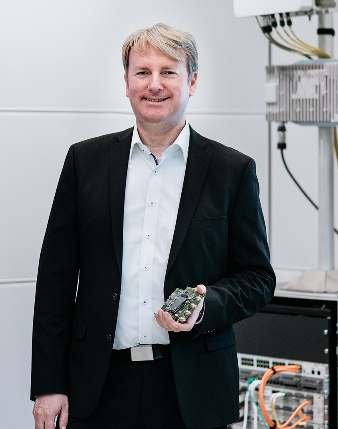5G Industry Campus Europe
5G has enormous potential to disrupt industrial communication and data handling with extreme speed and near-instant response times. However, the implementation of the mobile communication technology is not merely setting up some 5G antennas in a factory environment. Manufacturers also face a wireless tech’s added challenge that has seen nearly all technology development by telecom network operators and application-focused entirely on the consumer phone market.
Fraunhofer IPT’s Niels König coordinates the 5G-Industry Campus Europe, the largest industrial 5G testbed dedicated to production in Europe. He provides us with a few insights and considerations for small manufacturers looking to take advantage of 5G’s value offerings.
Industry 4.0 is seeing a rapid transition to new ways of integrating technology with various cyber-physical systems. With this comes new requirements and challenges for the fast transfer of big data. We are beginning to see a new fundamental need to handle and utilize data beyond what existing communication technologies can support.
Existing and future factories will likely see high value in transitioning to fast wireless communication technologies such as 5G. To date, 5G has not moved far away from a consumer offering. Only recently have a few large companies, such as Mercedes, started to take advantage of 5G’s potential.
5G offers some incredible advantages over existing network communication technologies. In summary, a 5G network offers a factory environment with far superior speeds, low latency, and the ability to support massive amounts of data over a considerable bandwidth. However, the caveat to this is that a factory environment will not achieve these benefits on a public or consumer network. The real value of 5G wireless data transfer is only achievable on dedicated private networks.
The fact that on the 5G-Industry Campus Europe, we have a fully equipped testbed helps us to demonstrate 5G applications not on lab-scale but in a realistic production scenario. Since there is lots of marketing and no proper market offer, it’s all about credibility for the topic. Our objective is to convince industrial users to get motivated to start with 5G and create a market pull. So, chicken and egg very well describe the current situation
Here is where one of the significant challenges lies, especially for an SME or Start-up looking at getting setup with 5G to support advanced manufacturing operations. Very few manufacturing firms would have the knowledge or expertise to establish their own 5G private network. The detailed design and implementation of a communications network are also critical to enable and support edge devices and cloud-based systems.
There is currently very little help available in consulting services with knowledge and experience with 5G for industrial networks. The network technology requirements towards a non-public network are not well understood yet across manufacturing industries. One big standout here is that public 5G is optimized for download traffic. General customers need fast video and content downloads. A manufacturer, however, needs superior and optimum uploading capabilities.
For SMEs especially, any solution needs to be affordable, and the most powerful solution may be out of reach. SME’s do not often have highly resourced IT departments that support network change and implementation, which can be a challenge.
“A stand-alone isolated 5G network, in which you have the highest performance and guaranteed quality of service, completely at your disposal, maybe unachievable for small companies. A decision for a more affordable solution may lead to partially make use of public 5G resources. For example, the core network or even the user plane. Then a company relies completely on the public 5G network with no guaranteed quality of service”
Niels Konig – Fraunhofer
IPT

Niels and the Fraunhofer IPT team are currently working on a special 5G-Audit that will support small companies to fill these gaps in effectively implementing 5G solutions. Part of this involves a tool that an SME can use to get guidance and clarity on the potential of 5G value offerings.
“You have to analyze each business case independently. We are working on an assessment tool that can calculate a potential cost-saving effect of using 5G based on a set of multiple production KPI.“
The 5G-Audit acts as a steppingstone for project planning. From here, Fraunhofer IPT can support and advise on the application and implementation of 5G communications, whether across existing infrastructure or starting from scratch and setting up new equipment. It extends from the factory planning stage to how to retrofit existing equipment such as milling machines with 5G sensor technologies.
In the outlook, Niels states,
“I expect that in a year or two, we’ll have reached the point where 5G will be normal in the industry.”